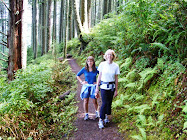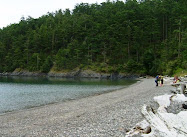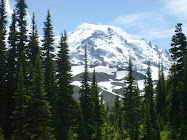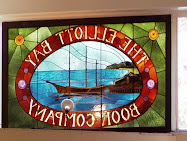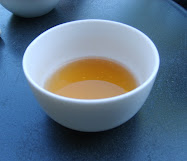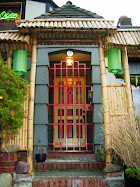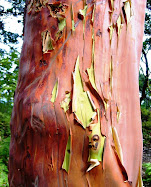 |
| Descent into Sea-Tac, Mt. Rainier, May 2013. |
I've tried to winnow down over a thousand photos taken in 2013 to just one (or two) a month to sum up the year in pictures here in the Northwest. Very hard to do!
These photos mostly reflect my outdoors passions. What would your year in photos look like?
While business was slow, I got out to play more than usual in the Pacific Northwest outdoors. Not so great for the pocket book, but fantastic for my mental and physical health.
January
Just because it's chilly doesn't mean we should hibernate here in the dead of winter. Clear skies and snow made for some wonderful trips: Lake Quinault Lodge where I witnessed a spectacular sunset, the Olympic coastline, Orcas Island, and of course skiing in the Cascades.
 |
| Sunset over the lake from Lake Quinault Lodge, WA. |
With an uptake in mountain snowfall, more skiing at Stevens Pass and Crystal Mountain, and cross-country skiing the Iron Horse Trail, along with a trip east of the Cascades to Wenatchee and Leavenworth. An unusual irruption of snowy owls caused a female to spend a few months near Sunset Hill Park in Seattle's Ballard neighborhood.
 | |
| Fun in the fresh pow at Stevens Pass, WA. Photo by Linda Dimmit. |
 |
| Sunset Hill snowy owl. |
March is a shoulder month here in the Northwest between winter and early spring, but still lots of snow in the mountains and early spring flowers in the lowlands. A late month highlight was an overnight on Mt. Hood, with spectacular stars and a lovely sunrise at Timberline Lodge.
 |
| Crater Rock and Mt. Hood, OR, summit twilight. Photo by Scott Conover. |
Things start really waking up by April in the Northwest, and a seasonal favorite is the Skagit Valley Tulip Festival. Hint, don't go on a weekend if possible! Equally special is the display of native wildflowers over at Deception Pass State Park, where I joined a group from the Washington Native Plant Society. Also enjoyed a weekend at Suncadia Resort exploring the eastern Cascade crest.
 | |
| Deception Pass State Park, WA. |
 |
| Skagit tulips, WA. |
Now we're talkin'. Hiking. Kayaking. Late snow in the mountains.Trips included a typical wet Memorial Day weekend camping on Shaw and Orcas Islands in the San Juans with great hikes and kayaking, an overnight to Paradise Lodge on Mt. Rainier to celebrate Washington's National Parks Fund, and dashing up Rattlesnake Ledge.
 |
| Magical and historic Doe Bay, Orcas Island, WA. |
June is when we Northwesterners are out camping, hiking, and more but getting a little impatient for the clouds to disappear (although they do some days). Summer never really starts until after the Fourth of July here. Regardless, enjoyed camping/hiking in the Teanaway region in Washington's central Cascades, hikes to Annette Lake and Little Si, kayak camping on Maury Island, and epic summer sunsets from Seattle's Carkeek Park.
 |
| Summer Solstice sunset, Carkeek Park, Seattle, WA. |
Ah July. Late month brings the crest of summer here in the Northwest. So much to get out and do. Outings included hiking ever popular Wallace Falls and Snow Lake, kayaking the Skykomish River and through the Ballard Locks, and an epic trip kayak camping off remote northwest Vancouver Island in the Bunsby Islands.
 |
| Cuttle Islets, Checleset Ecological Reserve, Vancouver Island, B.C. |
August is rich, mellow, and fantastic for high elevation hiking or any outdoors pursuit here. Or maybe just spending a weekend away with friends at a rented cabin, like I did in Hood River Valley. Kayak camping was a theme this year, and an overnight to Sucia Island in the northern San Juan Islands was crowded at the campsite but wonderful.
 |
| Sucia Island sunset paddle, WA. |
It just keeps getting better. September is often our best month of the year weather-wise in western Washington and Oregon. Time for getting together for late summer picnics, harvesting wine grapes, and early fall trips back to Orcas Island. So much to do and see and not enough weekends!
 | |
| Annual grape harvest, Whidbey Island Winery, Langley, WA. |
Oh October! My favorite month of the year. Whoever says we don't have fall colors here in the Northwest has never gone on a hike in the Cascades or to our Japanese gardens around the region. 'Twas a spectacular autumn hiking season this past fall, with hikes to Mason Lake, Mt. Pilchuck, Beckler Peak, and Lodge Lake in Washington's Cascades. More small farm harvesting, too, with a soggy but fun weekend in the Willamette Valley.
 |
| View west down I-90 corridor from Ira Spring Trail enroute to Mason Lake, WA. |
Usually November is our stormiest month, but 2013 brought an unusual dry but chilly spell. Highlights were a weekend in the Portland area hiking to the top of Multnomah Falls and beyond, bicycling around Portland's waterfront, watching the salmon spawning in Carkeek Park, a sweet trip to Seattle's Japanese garden, and a perfect Thanksgiving--doing the Seattle Turkey Trot before the ferry to Bainbridge Island for dinner.
 |
| Base of upper Multnomah Falls, OR. |
Usually we're skiing on December weekends, but in 2013 there is barely enough snow to operate and some areas aren't even open yet. It's a crazy busy month anyway. Walks in the lowland forest at Carkeek Park satisfied my need for outdoors nourishment.
 |
| Carkeek Park trail, Seattle, WA. |
Happy New Year and wishing you a 2014 full of laughter, good fun, and lots of smiles.
BTW for lots more photos and NW news between blog posts, Like Pacific Northwest Seasons on FaceBook or follow on Twitter.




.jpg)















































